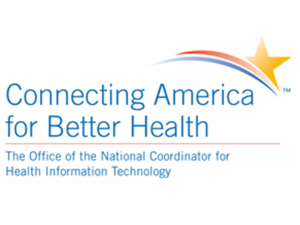The Health IT Workforce Development Program:
Help Is on the Way

Dr. David Blumenthal
A Message from Dr. David Blumenthal,
the National Coordinator for
Health Information Technology
October 12, 2010
(Excerpted from ONC site 10/12/2010)
When I talk with health professionals around the country about health information technology (health IT), they tell me they’re worried about a lack of technical support to help them become meaningful users of certified electronic health records (EHRs).
Family physicians, in fact, say the lack of technical support is their biggest concern. Dr. Jason Mitchell of the American Academy of Family Physicians (AAFP) Center for Health IT recently commented in an issue of AAFP News Now on the need for more resources to put people with expertise on the ground.
With so many clinicians making the transition to EHRs in the coming year, Dr. Mitchell says, the expertise that exists right now is stretched too thin.
In fact the data indicate a shortfall over the next five years of about 50,000 qualified health IT workers required to meet the needs of health professionals and hospitals as they move to adopt EHRs. As one vendor recently said, what we need is a “small army.”
But clinicians don’t have to make the transition alone. ONC recognizes the technical and logistical challenges involved in installing, using, and maintaining EHRs. And we are facing this problem head on.
The Health IT Workforce Development Program
To help meet the growing demand for health IT professionals, ONC has awarded $84 million in funding for the Health IT Workforce Development Program, which consists of four key initiatives to support training and certification of skilled workers:
- Community college non-degree training programs
- Development of high-quality educational materials
- A competency exam program to evaluate trainee knowledge and skills
- University-based training programs for highly specialized health IT roles
The Health IT Workforce Development Program is part of our comprehensive plan to facilitate EHR implementation and aims to ensure health professionals will have qualified technical support. It also provides a promising new career path for up and coming job seekers.
And the good news is that the program is already well under way. In fact, we are starting to see the first results.
Graduates Already On Their Way
With funding from ONC, the University of Texas at Austin has implemented a new Health IT Summer Certificate Program — a program that graduated its first class of students this summer. The university is part of a consortium led by Texas State University and funded under ONC’s Program of Assistance for University-Based Training.
The students, now certified “Health Information Managers and Exchange Specialists,” spent their summer learning:
- The fundamentals of health IT
- Business models used in medical practice
- Medical practice workflow
- Use of six EHR systems
The full-time program takes nine weeks and provides intensive contact with the health IT business community through coursework and practice. It will be repeated in 2011, 2012, and 2013.
Right now, most of the graduates are looking to enter — or have already entered — the health IT workforce. The remainder will be entering after they complete their college education next year.
Graduates are landing jobs with consulting firms, software vendors, technical assistance companies, and health care providers.
Next year, the University of Texas at Austin will begin offering three additional certificate programs in the following areas: Health Information Privacy and Security, Public Health Informatics, and Health Information Technology Sub-Specialist.
Community Colleges Use New Health IT Curriculum
Another initiative of the Health IT Workforce Development Program is the Curriculum Development Centers Program. Its purpose is to fund institutions of higher education to support the development of health IT curricula.
Community colleges that are participating in the Community College Consortia to Educate Health Information Technology Professionals in Health Care Program, also funded by ONC, are now using the health IT curriculum developed by the Curriculum Development Centers.
The five consortia include 84 community colleges — all of which are committed to training 10,500 community college students in health IT each year.
Health IT classes have already started in most of these community colleges, and in just six months or less, these students can be ready for jobs helping physicians adopt and use EHRs.
What This Means
The ball is rolling. Health IT workforce trainees are being fast-tracked. A new curriculum has been developed and disseminated. Very soon, support will be available to help physicians in the following areas:
- Assess workflows
- Select hardware and software
- Work with vendors
- Install and test systems
- Diagnose IT problems
- Train practice staff on systems
All in all, the Health IT Workforce Development Program is expected to reduce the shortfall of skilled health IT professionals by 85%. The highly trained and specialized personnel developed through these programs will play a critical role in supporting physicians nationwide as they transition to EHRs.
Help is not only on the way—it’s here.
Sincerely,
David Blumenthal, M.D., M.P.P.
National Coordinator for Health Information Technology
U.S. Department of Health & Human Services
The Office of the National Coordinator for Health Information Technology (ONC) encourages you to share this information as we work together to enhance the quality, safety and value of care and the health of all Americans through the use of electronic health records and health information technology.
For more information and to receive regular updates from the Office of the National Coordinator for Health Information Technology, please subscribe to our Health IT News list.
###
See all David Blumenthal’s Letters, on ONC’s Coordinator’s Corner.



